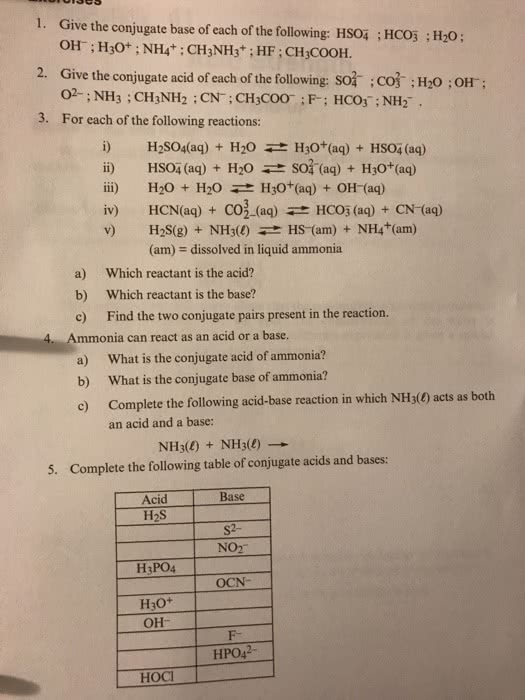(a) Using dissociation constants from Appendix D, determine the value for the equilibrium constant for each of the following reactions.
(i) HCO3-(aq) + OH-(aq)  CO32-(aq) + H2O(l)
CO32-(aq) + H2O(l)
(ii) NH4+(aq) + CO32-(aq)  NH3(aq) + HCO3-(aq)
NH3(aq) + HCO3-(aq)
(b) We usually use single arrows for reactions when the forward reaction is appreciable (K much greater than 1) or when products escape from the system, so that equilibrium is never established. If we follow this convention, which of these equilibria might be written with a single arrow?

and be derived as 1/Kb for carbonate ion:

The Kb for carbonate ion is calculated from the Ka2 for carbonic acid, as it is a conjugate base of HCO3– ion.

The equilibrium constant K is

b) The equilibrium constant for the reaction: NH4+(aq) + CO32-(aq)  NH3(aq) + HCO3-(aq) is
NH3(aq) + HCO3-(aq) is

and can be derived from Kb for ammonia and Kb for carbonate ion.
NH3 + H2O  NH4+(aq) + OH-(aq)
NH4+(aq) + OH-(aq)

CO32– + H2O  HCO3– + OH–
HCO3– + OH–

The Kb for carbonate ion is calculated from the Ka2 for carbonic acid, as it is a conjugate base of HCO3– ion.

The equilibrium constant K is

b) Both equations might be written with single arrows as both equilibrium constants are larger than 1.
(a) Using dissociation constants from Appendix D, determine the value for the equilibrium constant for each of the following reactions.
(i) HCO3-(aq) + OH-(aq) CO32-(aq) + H2O(l)
(ii) NH4+(aq) + CO32-(aq) NH3(aq) + HCO3-(aq)
(b) We usually use single arrows for reactions when the forward reaction is appreciable (K much greater than 1) or when products escape from the system, so that equilibrium is never established. If we follow this convention, which of these equilibria might be written with a single arrow?
and be derived as 1/Kb for carbonate ion:
The Kb for carbonate ion is calculated from the Ka2 for carbonic acid, as it is a conjugate base of HCO3– ion.
The equilibrium constant K is
b) The equilibrium constant for the reaction: NH4+(aq) + CO32-(aq) NH3(aq) + HCO3-(aq) is
and can be derived from Kb for ammonia and Kb for carbonate ion.
NH3 + H2O NH4+(aq) + OH-(aq)
CO32– + H2O HCO3– + OH–
The Kb for carbonate ion is calculated from the Ka2 for carbonic acid, as it is a conjugate base of HCO3– ion.
The equilibrium constant K is
b) Both equations might be written with single arrows as both equilibrium constants are larger than 1.

